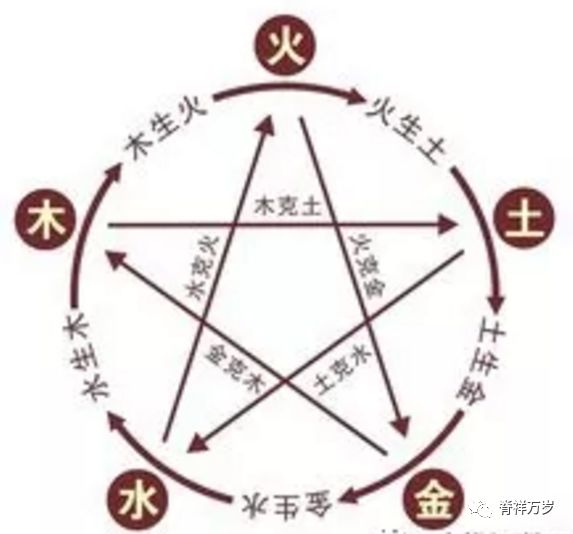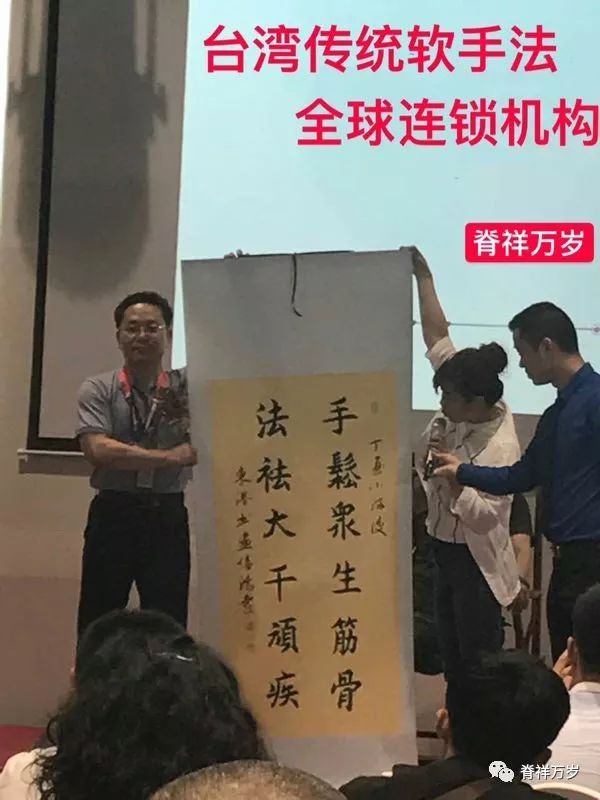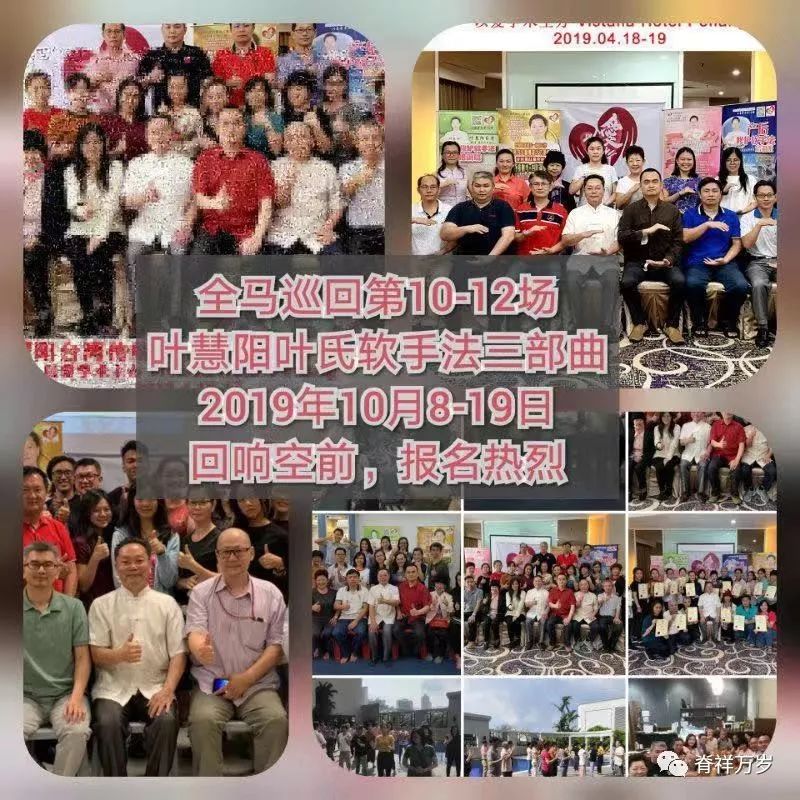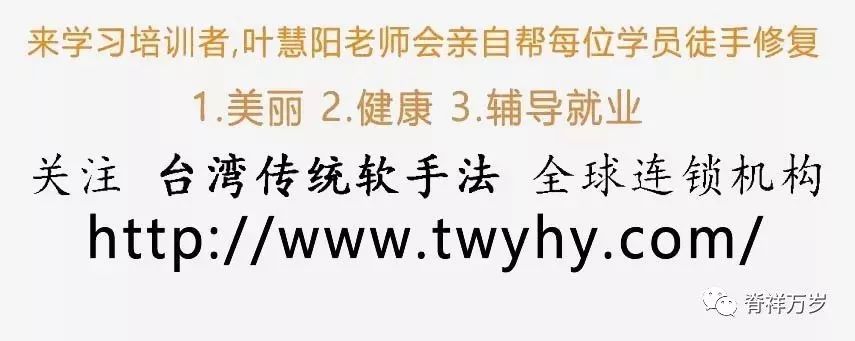
The Five Elements are interrelated through generation and overcoming.
Generation: Wood generates Fire, Fire generates Earth, Earth generates Metal, Metal generates Water, Water generates Wood. —- Generation represents development.
Overcoming: Wood overcomes Earth, Earth overcomes Water, Water overcomes Fire, Fire overcomes Metal, Metal overcomes Wood. —- Overcoming represents balance.
In Traditional Chinese Medicine (TCM), the concepts of “Five Elements, Five Qi, Five Organs, Five Tastes, and Five Colors” are interconnected and mutually supportive, generating and overcoming each other. The harmony of the Five Elements directly affects bodily functions; any imbalance can lead to corresponding physical symptoms. Therefore, understanding the Five Elements of the body is essential for health.
 Wood
Wood
Season associated with Wood: Spring. Organs associated with Wood: Liver (Gan), Gallbladder (Dan), Eyes. When working too hard, the first organ to protect is the liver. The liver is the organ that stores blood in the body; if you work excessively, it must work hard to store blood. The Five Elements are originally generated in the order of Liver → Heart (Xin) → Spleen (Pi) → Lung (Fei) → Kidney (Shen). If the liver is overworked and weak, it affects the heart, spleen, lung, and kidney, and the accumulated anger from overwork can also harm the liver. Therefore, snacks during overtime work can include sour foods, such as preserved plums. If any organ associated with Wood feels uncomfortable, it is beneficial to consume more green foods associated with Wood. These foods correspond to the liver and gallbladder, containing a large amount of chlorophyll, vitamins, and fiber, which can help the organs accelerate the elimination of toxins from the body. Emotions associated with Wood: Anger Taste associated with Wood: Sour Foods associated with Wood: Green foods Recommended foods: Cabbage, lettuce, and spinach.
 Fire
Fire
Season associated with Fire: Summer. Organs associated with Fire: Heart, Small Intestine, Tongue. Emotions associated with Fire: Joy Taste associated with Fire: Bitter Foods associated with Fire: Red foods. The heart is associated with Fire, and during this time, it is easy to experience excess heat, restlessness, and rapid heartbeat, which increases the burden on the heart. Therefore, it is crucial to nourish the heart in summer. In addition to consuming heart-nourishing foods, according to the principle of overcoming in the Five Elements, the kidney overcomes heart fire, so nourishing kidney energy in winter is a wise approach. To nourish the heart, it is best to eat red foods, which correspond to the red blood and the heart responsible for blood circulation. People with poor complexion and cold extremities can benefit from consuming more red foods. Recommended foods: Red beans, red dates, carrots, red peppers, tomatoes.
 Earth
Earth
Season associated with Earth: Late Summer. This refers to the period in summer when the dry heat has passed, and it begins to rain. Organs associated with Earth: Spleen, Stomach, Mouth. Emotions associated with Earth: Worry Taste associated with Earth: Sweet Foods associated with Earth: Yellow foods. Late summer is the wettest time of the year. Excess humidity can harm the spleen and stomach, and when the spleen and stomach are affected, appetite decreases, which is why we often lack appetite in the summer. During this time, it is essential to consume more sweet and bitter foods; eating sweet foods can replenish spleen energy. According to the Five Elements, the heart nourishes the spleen, and consuming bitter foods that strengthen the heart also benefits the spleen. If there are issues with the earth organs, yellow foods correspond to them. The spleen and stomach play a role in nutrient supply in the body; when they are well-regulated, qi and blood will be abundant. Recommended foods: Oranges, pumpkins, corn, yellow soybeans, sweet potatoes.
 Metal
Metal
Season associated with Metal: Autumn. In autumn, it is essential to nourish the lungs, and the most common ailment is coughing, which is influenced by the spirit in the Five Elements. In autumn, plants begin to wither, which can easily lead to feelings of melancholy. Organs associated with Metal: Lungs, Large Intestine, Nose. Emotions associated with Metal: Sadness. Sadness is associated with Metal and originates from the lungs; excessive sadness can damage the lungs. Taste associated with Metal: Spicy Foods associated with Metal: White foods. Foods associated with Metal primarily correspond to the lungs and are mostly white foods. They are neutral and cool in nature, can strengthen the lungs and clear the voice, and promote gastrointestinal motility, enhancing metabolism and giving the skin elasticity and luster. Recommended foods: Pears, white radishes, yam, almonds, lilies, and white fungus.
 Water
Water
Season associated with Water: Winter. Organs associated with Water: Kidneys, Bladder, Ears. Excessive external food can harm the kidneys, which are the organs we care about most. Chefs often use a lot of oil and salt in cooking, which makes food more flavorful. However, salty flavor is associated with Water and the kidneys; in moderation, it is beneficial, but excessive consumption is detrimental. If the complexion is dark, it may indicate kidney issues. Emotions associated with Water: Fear Taste associated with Water: Salty Foods associated with Water: Black foods. These foods correspond to the kidneys and bones, and regular consumption can help maintain normal metabolism related to the kidneys, bladder, and bones, preventing excess water retention that can lead to edema and strengthening the bones. Recommended foods: Black beans, black sesame, blueberries, shiitake mushrooms, black dates, longan, and dried plums.
In summary:
Five Elements: Fire, Wood, Earth, Metal, Water
Five Organs: Heart, Liver, Spleen, Lung, Kidney
Five Bowels: Small Intestine, Gallbladder, Stomach, Large Intestine, Bladder
Five Senses: Tongue, Eyes, Mouth, Nose, Ears
Five Features: Face, Nails, Lips, Skin, Hair
Five Tastes: Bitter, Sour, Sweet, Spicy, Salty
Five Colors: Red, Green, Yellow, White, Black
Five Emotions: Joy, Anger, Worry, Sadness, Fear
Five Fluids: Sweat, Tears, Saliva, Mucus, Spit

1. The Five Organs and Five Bowels
In traditional culture, the liver corresponds to the gallbladder, hence the term “the liver and gallbladder reflect each other.” When the gallbladder’s energy rises, the liver’s energy can also rise.
The heart corresponds to the small intestine. In daily life, from 11 AM to 1 PM is the time of the heart, but the heart is not affected by evil, so the small intestine may suffer on its behalf. If there are absorption issues, it can lead to small intestine diseases. When the small intestine is in its prime, if a person experiences blushing, palpitations, or chest tightness, it indicates a problem in the relationship between the heart and small intestine, which is a precursor to heart issues.
The spleen corresponds to the stomach; they are interdependent. If the spleen is weak, the stomach will also be weak, and vice versa.
The lungs and large intestine are interdependent. When a person needs to defecate, it is the lung energy that helps expel the stool. Some skin symptoms are also related to the large intestine; in some cases, TCM may not directly treat the lung meridian but may directly address the large intestine meridian, as clearing the fire from the large intestine can resolve the issue.
The kidneys and bladder are interdependent. The bladder’s qi transformation function depends on the strength of the kidney qi; sufficient kidney qi is necessary for the bladder to function properly in storing and expelling urine.
The profound secrets of the Five Colors, Five Tastes, and Five Elements in dietary health!!! It is said that Bian Que had the ability to see through and could observe the Five Organs and Six Bowels. How did he achieve this? It is closely related to the Five Colors, Five Tastes, and Five Elements in dietary health. If you cannot apply these principles, your ailments will manifest on your face, and he could naturally see where you are unwell. This is not about having a “seeing eye”; it simply means he had profound knowledge of the Five Colors, Five Tastes, and Five Elements in dietary health! Enough said, let’s move on!
Five Grains: This refers to japonica rice, adzuki beans, wheat, soybeans, and yellow millet.
Five Fruits: This refers to peaches, plums, apricots, chestnuts, and dates. Peaches are beneficial for qi and blood, and for generating body fluids, making them an ideal nourishing fruit.
Five Livestock: This refers to cattle, sheep, pigs, dogs, and chickens. Beef is known to replenish qi and strengthen the body, as the saying goes, “Beef replenishes qi, equal to yellow rice.”
Five Vegetables: This refers to sunflower, mint, garlic, scallions, and chives, indicating that vegetables have the role of nourishing the body.
Different foods contain different nutrients; only by achieving a reasonable combination of various foods can the body obtain a variety of nutrients.
2. The Five Colors and Dietary Health
The color of food corresponds to the Five Organs, and a reasonable combination is the foundation of dietary health. From the perspective of TCM, green enters the liver, red enters the heart, yellow enters the spleen, white enters the lungs, and black enters the kidneys.
The heart color is red, associated with summer, so red foods nourish the heart and invigorate blood, and also have the effect of promoting blood circulation. Especially in summer, it is crucial to nourish the heart, so it is advisable to eat more hawthorn (red fruit), tomatoes, red apples, red peaches, red radishes, and red peppers.
The kidney color is black, associated with winter, so black foods are beneficial for kidney anti-aging. Especially in winter, it is essential to nourish the kidneys, so it is advisable to eat more black mulberries, black sesame, black rice, black beans, He Shou Wu, and cooked Rehmannia.
The lung color is white, associated with autumn, so white foods have a nourishing effect on the lungs. Therefore, in autumn, it is advisable to eat more ginkgo, white pears, white peaches, white almonds, lilies, and pear syrup.
The spleen color is yellow, which nourishes throughout the year, so yellow foods are beneficial for the spleen. Especially during late summer and the last 18 days of each season, it is advisable to eat more yam, sweet potatoes, yellow millet, and corn.
The liver color is green, represented by green, so green foods are beneficial for the liver. Especially in spring, it is advisable to eat more green bamboo shoots, green vegetables, green beans, and spinach.
3. The Five Tastes and Dietary Health
Excessively sour taste: Sour taste nourishes the liver, but too much sour can harm the liver, leading to excessive liver qi, which can overcome the spleen and stomach (Wood overcomes Earth), resulting in digestive dysfunction.
Excessively alkaline taste: Alkaline taste nourishes the kidneys, but too much alkaline can harm the kidneys and damage the bones (the kidneys govern the bones and produce marrow). Excessive kidney qi can lead to suppressed heart qi (Water overcomes Fire), causing palpitations and shortness of breath.
Excessively sweet taste: Sweet taste nourishes the spleen, but too much sweetness can harm the spleen, leading to stomach bloating and discomfort, and can also overcome kidney water (Earth overcomes Water), resulting in a dark complexion.
Excessively bitter taste: Bitter taste nourishes the heart, but too much bitterness can harm the heart, leading to heart and lung dysfunction (Fire overcomes Metal).
Excessively spicy taste: Spicy taste nourishes the lungs, but too much spiciness can harm the lungs, leading to sluggish tendons (Metal overcomes Wood; the liver belongs to Wood and governs the tendons). Since the lungs govern qi, harming qi can lead to mental weakness.
4. The Mysteries Between Humans and the Five Elements
The earth has five directions, humans have five elements, and food has five tastes… How can we grasp the different dietary codes of the Five Elements in the universe to adjust health and fortune for different types of people? Chu Qi will elaborate on the external characteristics of the five types of people associated with Metal, Wood, Water, Fire, and Earth in the following five issues, along with the corresponding dietary adjustments.
Wood Type Person – Kind and Righteous
External characteristics: Slim, some are tall and slender, while others are petite and delicate, appearing slender and upright, with a longer waist and less flesh on the back. Wood type people have long faces and a greenish complexion.
What do Wood type people like to eat? (Wood), (Water) type foods. Wood type people enjoy sour foods, such as green plums, and prefer vegetables, showing little interest in fatty meats. They enjoy tea, especially flower tea (as flower tea contains the most Wood element). They also like to drink vegetable soup, fish, and jellyfish, which have a refreshing salty taste. Wood type people prefer salty flavors and do not like sweet flavors. In terms of dietary adjustments for Wood type people, they should consume foods that nourish the Earth (土) to enhance their fortune: (土) eat more meat, such as beef, pumpkin, desserts, and yellow soybeans. For health maintenance: (木旺、火弱) they should supplement with warming foods to balance their Wood energy: red apples, red dates, pig heart, etc.
Metal Type Person – Delicate, Authoritative, and Respected
External characteristics: Large frame, solid muscles, high and wide forehead, fair skin, prominent nose, and a square appearance. They speak with a loud and clear voice, and their hair is sparse or lacks luster. What do Metal type people like to eat? (土), (金) type foods. (土) They enjoy sweet foods, particularly meat, eight-treasure porridge, peanuts, etc. (金) They prefer soy products, ginger, scallions, and chicken.
What should Metal type people eat for dietary adjustments? They should supplement with (木) type foods: Metal overcomes Wood, so they should balance by supplementing Wood: (木) papaya, green tea, or Pu-erh tea, lemons, etc. They should also supplement with (水) type foods: Metal is dry, so they should add moisture: (水) snow pears, salted fish, chicken kidneys, pig ears, etc.
Water Type Person – Intelligent and Articulate
Water type people have two external characteristics: 1. Slim water type: Dark skin on the face and body, long and slender body, small and deep-set eyes, solid bone structure, and muscular. 2. Fat water type: Short and stout, with short and round hands and feet, large belly, buttocks, and ears, with more flesh and less bone, and loose muscles. Generally, slim water type people are more active, while fat water type people tend to enjoy life more.
What do Water type people like to eat? (水), (金) type foods. (水) They enjoy marinated platters, seafood, especially shellfish, and prefer salty flavors. (金) They like pastries, corn, garlic, ginger, and chicken feet, and enjoy soup and spicy food.
What should Water type people eat for dietary adjustments? (火), (木) type foods. For fortune adjustments: (水旺、火弱) they should supplement with fire to balance their fortune: dog meat, lamb, hawthorn, duck tongue, tomatoes, watermelon. For health maintenance: (水旺、木虚乏力) they should protect the liver and kidneys: vegetables, green plum wine, fish heads.
Fire Type Person – Courteous, Active, and Proactive
External characteristics: Round and large eyes, sparse beard, red nose, flushed complexion, solid muscles, and exposed bone structure. Fire type people usually have a pointed head, rosy complexion, lively spirit, slender body, and quick movements.
What should Fire type people eat for dietary adjustments? They should consume more Water type foods. When Fire is strong and Water is depleted, they should supplement with Water to balance their fortune. (补运) Foods to supplement with Water: bird’s nest, kelp, mung bean soup, water fish, stir-fried chicken kidneys, seaweed egg drop soup, coconut sago. For health maintenance, Fire type people should eat more Earth type foods, such as snow fungus sweet soup, water chestnut soup, honey, and red bean paste.
Earth Type Person – Methodical and Trustworthy.
External characteristics: Earth type people usually have a thick waist and back, some are tall and large but have loose muscles, while others are of medium build but have solid muscles. Relatively shorter Earth type people tend to be more agile than taller ones. Earth type people have a thick waist and back, large and heavy bones, short necks, and round heads, with the most prominent feature being thick lips and a large nose, with a complexion that is red, black, and yellow. Earth type people are generally tolerant, hardworking, honest, and trustworthy, with a sense of justice. They are methodical and strategic, making them suitable for business. Earth type people tend to be introverted and orderly, showing little interest in new things.
In terms of health, Earth type people are prone to gastrointestinal diseases and digestive issues.
For dietary adjustments, Earth type people should consume more Wood type foods: vegetables, high-fiber foods, stir-fried cloud ear mushrooms with celery, stir-fried chicken with tea tree mushrooms, green tea, pea sprouts, lemon water, etc. For health maintenance, they should consume more Metal type foods: chrysanthemum tea, tofu, lotus root mung bean soup.
Spring Diet
1. Spring is the season of growth and the emergence of Yang energy. Friends engaged in design and planning work need to maintain active thinking in a competitive market to create unique design ideas that gain recognition. It is not easy to achieve this, so these friends need to adjust their schedules to maintain optimal conditions for more energy to be devoted to work. In addition to adequate rest to maintain good spirits, diet is also a primary source of maintaining bodily functions. So what should one eat to enhance creativity and inspiration? In metaphysics, the “Wenchang Star” represents thinking and creativity, and it belongs to the Wood element, also known as the “Wenqu Star” which governs academic success and creativity. Starting from this issue, Chu Qi will recommend several dishes that enhance Wenchang in spring. The first dish: “Stir-fried Chives with Clams and Eggs” – Chives belong to the Wood element, cut into sections rather than diced, to strengthen their “Wood” energy. Clam meat belongs to the Water element, and eggs belong to the Metal element. This combination forms a strong chain of Five Elements that supports thinking and improves eyesight. Friends engaged in design and planning can eat this dish more often in spring.
2. The “Wenchang Star” is beneficial not only for friends in creative and design fields but also for young students, as it can help them unleash their potential for learning. This issue’s recommended Wenchang dish is “Stir-fried Cucumber with Shrimp”. Cucumber belongs to the Wood element, rich in vitamins and malic acid, and is a fiber food that aids detoxification. Choose green cucumbers, do not peel, remove seeds, and slice them to stir-fry with fresh shrimp. Fresh shrimp belongs to the Water element, and in metaphysics, Water has the ability to penetrate and connect, which helps the Wenchang Star express its Wood nature. Fresh shrimp is rich in protein, making it a brain-boosting food. Students should eat this dish more in spring, and combined with regular and sufficient sleep, it will yield great results.

5. The Five Elements System Diagram
Five Organs: Liver, Heart, Spleen, Lung, Kidney. These are the physical organs that transform and store the essence of the body. Five Bowels: Gallbladder, Small Intestine, Stomach, Large Intestine, Bladder. These are the hollow organs that serve as conduits for the body, digesting food and eliminating waste.
Wood – Liver, Gallbladder. Governs meridians, opens to the eyes, corresponds to spring, green, nourishes the liver and gallbladder.
Fire – Heart, Small Intestine. Governs blood vessels, opens to the tongue, corresponds to summer, red, nourishes the heart.
Earth – Spleen, Stomach. The spleen and stomach are the foundation of postnatal life and the source of qi and blood. Yellow, nourishes the spleen and stomach throughout the year.
Metal – Lung, Large Intestine. Governs skin and hair, opens to the nose, corresponds to autumn, white, nourishes the lungs.
Water – Kidney, Bladder. Governs bone marrow, opens to the ears, corresponds to winter, black, nourishes the kidneys.
Nourish the liver in spring, the heart in summer, the lungs in autumn, and the kidneys in winter. Nourish the spleen and stomach throughout the year.
6. The Running Points of the Fourteen Meridians
Lung Meridian – (from chest to hand) – Zhongfu – Chize – Lieque – Shaoshang
Large Intestine Meridian (from hand to head) – Shangyang – Hegu – Quchi – Binao – Jianyu – Yingxiang
Stomach Meridian (from head to foot) – Chengqi – Sihai – Touwei – Renying – Quepen – Ruzhong – Rugen – Tianshu – Liangqiu – Zusanli – Jiexi – Lidui
Spleen Meridian (from foot to chest) – Yinbai – Sanyinjiao – Yinlingquan – Xuehai – Daheng – Dabao
Heart Meridian (from chest to hand) – Jiquan – Shenmen – Shaochong
Small Intestine Meridian (from hand to head) – Shaoze – Jianzheng – Tianzong – Tinggong
Bladder Meridian (from head to foot) – Jingming – Zhuanzhu – Tianzhu – Chengfu – Yinmen – Weizhong – Chengshan – Kunlun – Zhiyin
Kidney Meridian (from foot to chest) – Yongquan – Taixi – Yinggu – Yufu
Pericardium Meridian (from chest to hand) – Tianchi – Quze – Ximen – Neiguan – Laogong – Zhongchong
Triple Warmer Meridian (from hand to head) – Guanchong – Sidu – Jianliao – Yifeng – Ermen – Sizhukong
Gallbladder Meridian (from head to foot) – Tongziliao – Shuaigu – Fengchi – Jianjing – Daimai – Huanjiao – Yanglingquan – Zuqiaoyin
Liver Meridian (from foot to chest) – Dadu – Xingjian – Taichong – Zhangmen – Qimen
Governing Vessel (Qi Regulation) – Yaoyuan – Yaoyangguan – Mingmen – Jizhong – Zhiyang – Shenzhu – Dazhu – Fengfu – Baihui – Shenting – Renzhong – Yinjiao
Conception Vessel (Blood Regulation) – Chengjiang – Lianquan – Tiantu – Shanzhong – Jiwei – Zhongwan – Shenque – Qihai – Guanyuan
7. The Twelve Time Periods, Meridians, Five Organs, and Health Maintenance
Hand Three Yin Lung Meridian (1:00-3:00) – Lung fullness, cough, shortness of breath, Quepen and throat pain – It is advisable to regulate the lung meridian and sleep well.
Hand Three Yang Large Intestine Meridian (5:00-7:00) – Toothache, neck swelling – It is advisable to drink warm water and have a bowel movement; regulate the large intestine meridian.
Foot Three Yang Stomach Meridian (7:00-9:00) – Abdominal rumbling, indigestion – It is advisable to have breakfast on time; regulate the stomach meridian.
Foot Three Yin Spleen Meridian (9:00-11:00) – Stiffness at the root of the tongue, vomiting after eating, stomach pain, abdominal distension – Drink water in moderation; regulate the spleen meridian.
Hand Three Yin Heart Meridian (11:00-13:00) – Dry throat, headache, thirst – Have lunch, rest, and nourish yin blood; regulate the heart meridian.
Hand Three Yang Small Intestine Meridian (13:00-15:00) – Throat and jaw pain, shoulder pain, arm pain – Regulate the small intestine meridian and eat less food.
Foot Three Yang Bladder Meridian (15:00-17:00) – Headache, eye pain, neck pain – It is advisable to drink water and exercise; regulate the bladder meridian.
Foot Three Yin Kidney Meridian (17:00-19:00) – Cold extremities, lower back pain, tinnitus – It is advisable to rest; regulate the kidney meridian.
Hand Three Yin Pericardium Meridian (19:00-21:00) – Chest pain, irregular heartbeat, hand heat – It is advisable to have dinner, walk, and relax; regulate the pericardium meridian.
Hand Three Yang Triple Warmer Meridian (21:00-23:00) – Tinnitus, muffled hearing, throat swelling – It is advisable to maintain a calm mind; regulate the triple warmer meridian.
Foot Three Yang Gallbladder Meridian (23:00-1:00) – Dizziness, bitter mouth, sighing – It is advisable to sleep; regulate the gallbladder meridian.
Foot Three Yin Liver Meridian (1:00-3:00) – Chest tightness, fatigue, dark circles – It is particularly easy to feel irritable.
8. The Skin is a Mirror of the Internal Organs
Facial color: Green – Liver qi stagnation; Red – Excess heart fire; Yellow – Spleen and stomach disharmony; White – Lung qi not dispersing; Black – Kidney qi deficiency.
Tongue color: Red – Heat syndrome; White – Qi and blood deficiency; Dark purple – Blood stasis.
Tongue coating: White – Cold syndrome; Yellow – Heat syndrome.
Stomach deficiency: Black spots and wrinkles on the hairline and forehead.
Stomach heat: Acne and bad breath on the hairline and forehead.
Dark circles: Obstructed heart circulation; eye bags: Obstructed bladder metabolism.
Liver qi deficiency: Pigmentation; Excess liver qi: Red blood vessels, rashes, constipation.
Lung heat: Skin allergies; Lung qi not dispersing: Enlarged pores, skin allergies.
Spleen deficiency: Dark lips or pigmentation.
Uterine damp heat: Acne and pus (may indicate fibroids).
Uterine cold or pigmentation, pigmentation deposits.
Food – Esophagus – Stomach:
A: Spleen deficiency: Dark lips or pigmentation. B: Stomach deficiency: Black spots and wrinkles on the hairline and forehead. C: Stomach heat: Acne and bad breath on the hairline and forehead.
9. Seven Aspects of Function Decline Due to Spleen and Stomach Dysfunction
1: Spleen and stomach decline – Liver insufficiently digests and absorbs protein in the stomach – Insufficient liver blood storage – Liver qi deficiency: depression, pigmentation on the forehead; Excess liver qi: irritability, red blood vessels, dry eyes – Gallbladder circulation obstruction: premature graying on the sides of the head, bitter mouth.
2: Spleen and stomach dysfunction – Insufficient liver blood storage – Insufficient circulation to the heart – Blood does not nourish the heart – Dark circles, cold extremities, frequent dreams or insomnia – Small intestine function decline – Mouth sores, diarrhea.
3: Spleen and stomach dysfunction – Liver qi stagnation, forming lumps – Leading to uterine appendage diseases – Uterine cold, scanty menstruation, dark or pigmented edges of the mouth, pigmentation under the cheekbones; Uterine damp heat, dark acne on the edges of the mouth and chin.
4: Spleen and stomach dysfunction – Excess liver qi – Lung heat – Red blood vessels, enlarged pores: nasal congestion, sneezing – The lung and large intestine are interdependent – Large intestine dryness – Constipation.
5: Spleen and stomach dysfunction – Reduced ability to transform qi for the kidneys – Kidney qi deficiency – The kidneys and bladder are interdependent – Bladder metabolism obstruction – Eye bags, facial swelling, tinnitus; frequent urination, lower body edema, weakness in the waist and feet.
6: Spleen and stomach dysfunction – Reduced ability to transform qi for the kidneys – Kidney qi deficiency – Inability to promote large intestine peristalsis – Constipation.
7: Spleen and stomach dysfunction – Spleen deficiency – Insufficient blood production – Heavy menstrual flow (blood sea. Heavy flow – spleen meridian; light flow – liver meridian).
Spleen – Generates qi, governs blood, transforms.
Many fans have not yet developed the habit of liking after reading, and I hope everyone will like it after reading to show encouragement! Persistence is a belief, and focus is an attitude!


Source: Internet, copyright belongs to the original author. If there is any infringement, please contact us in a timely manner, and we will delete it (if there is any similarity, the interpretation rights belong to “Jixiang Wansui”).

